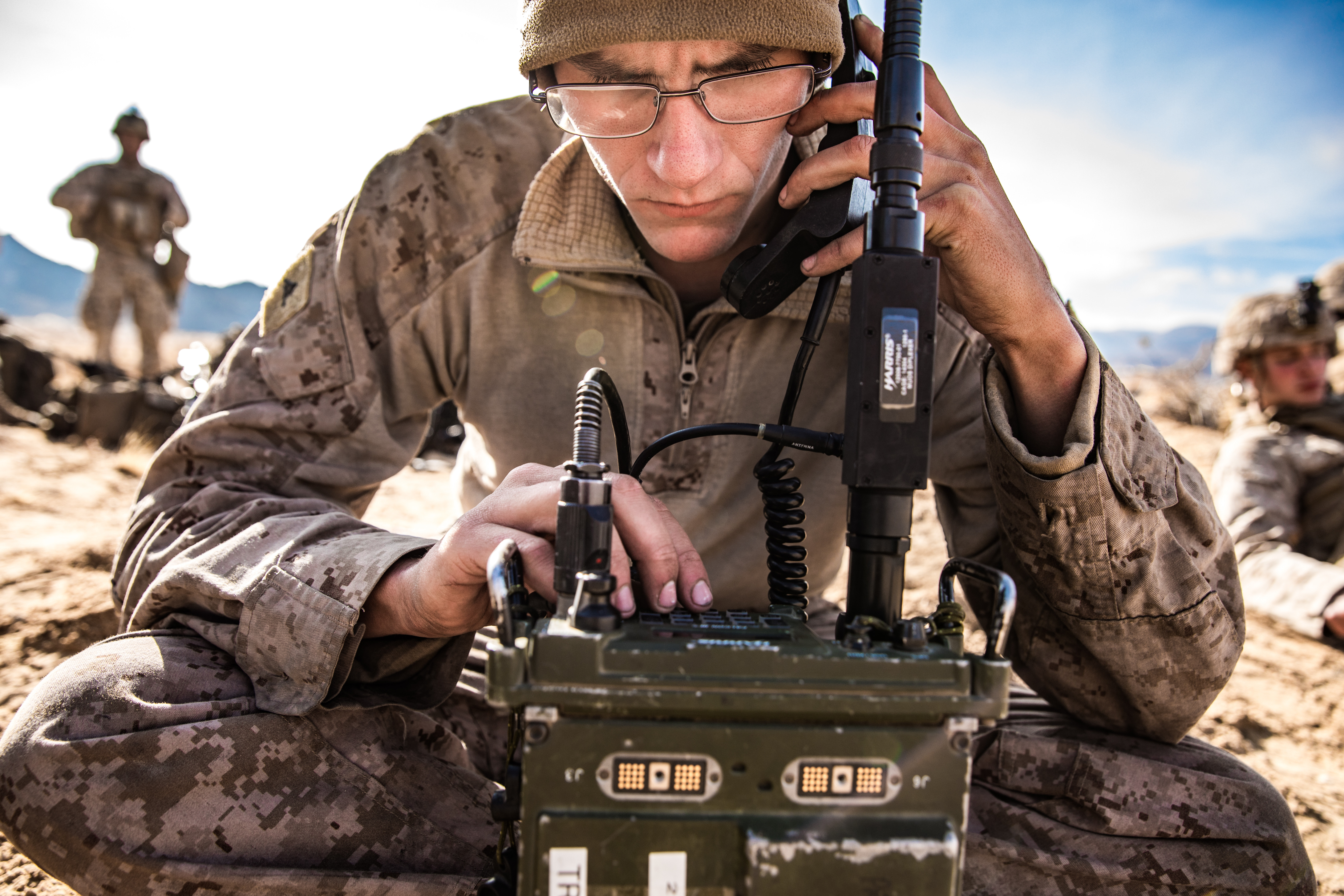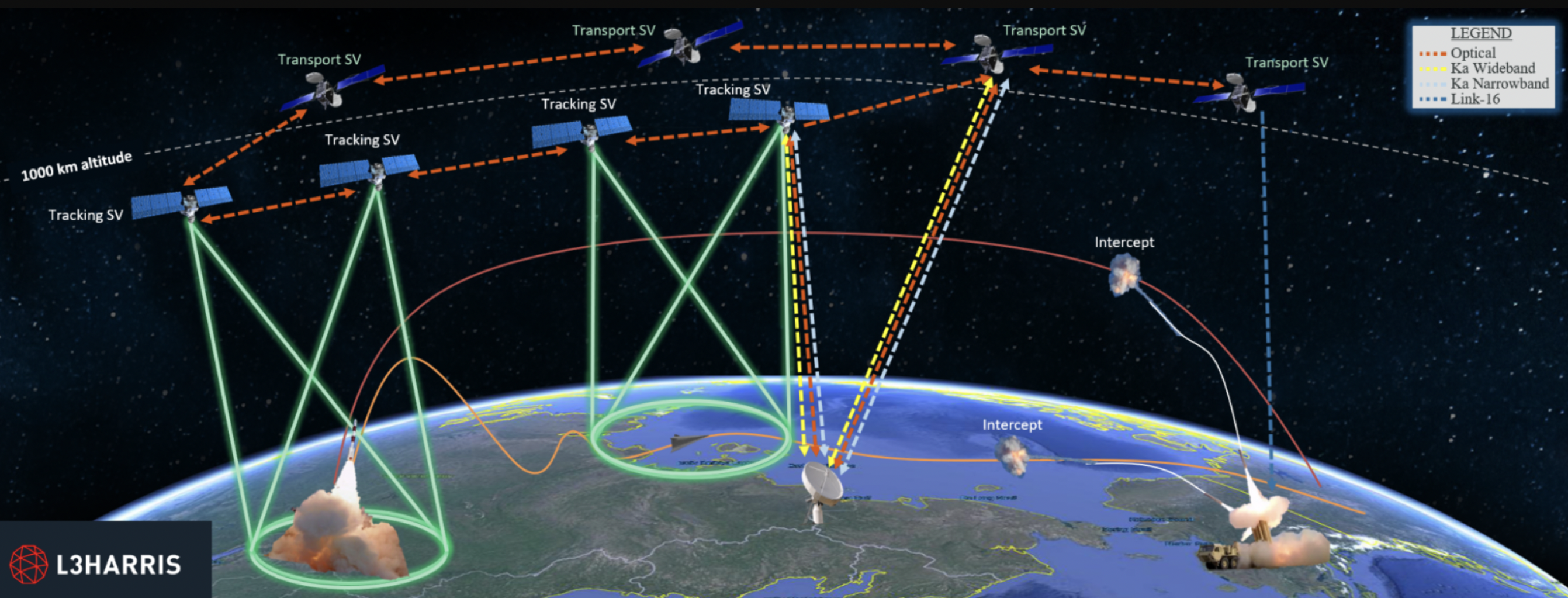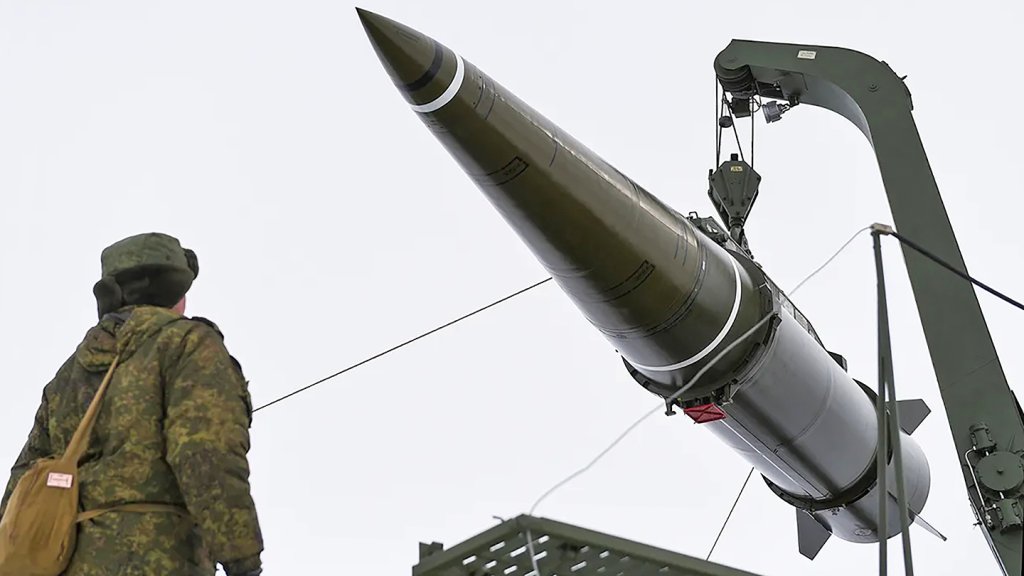The U.S. Space Development Agency, or SDA has outlined the progress made so far in demonstrating a satellite-based Link 16 system to transmit data directly from space, the potential of laser communications to connect satellites together in a mesh network and back to earth, as well as developments in using those same satellites to conduct missile tracking from low Earth orbit (LEO). All could have significant implications for future conflicts.
The updates were provided by SDA director Derek M. Tournear, speaking at the Air & Space Forces Association’s (AFA) main annual conference just outside Washington, D.C. yesterday.

To explore the potential of Link 16 in space, SDA is using satellites from York Space Systems, with the first data sent via this system in November of last year. The initial space-to-ground Link 16 connection was from LEO and involved three of York’s T0 Transport Layer satellites and what the SDA described as “a series of receivers using terrestrial radios during three demonstrations held November 21-27, 2023.”
“Operators working with SDA conducted both passive and active network entry, obtained fine synchronization, and transmitted multiple tactical messages from satellites using L-band radios aboard Tranche 0 (T0) Transport Layer satellites to a ground test site located within the territory of a Five Eyes partner nation,” the agency announced in a media release at the time. The Five Eyes partners are Australia, Canada, New Zealand, the United Kingdom, and the United States, which share a broad range of intelligence with one another.
Another set of data-transport satellites, built by Lockheed Martin and launched in September 2023, are also now serving the Link 16 trials. In all, the SDA’s initial Tranche 0 constellation comprises 28 satellites — 19 transport and eight tracking satellites in LEO, plus one ground-based testbed satellite.
Link 16 is a NATO-standard tactical datalink communication system and one that’s central to U.S. and allied military operations, allowing coalition forces to seamlessly transmit and exchange real-time situational awareness data.

Link 16 is also a fundamental component of America’s expanding Joint All Domain Command and Control (JADC2) initiative, which aims to allow commanders to share data and create a “common operating picture” for real-time intelligence and automate fire control.
Using satellites to support Link 16 connectivity offers various benefits, including the potential to provide a more robust link between sensors and shooters wherever they may be.
While traditional Link 16 radios have a line-of-sight range of around 200 to 300 nautical miles, putting relay systems in space has the huge advantage of providing beyond-line-of-sight communications around the globe in near-real-time.
Already, providing an active Link 16 network across a region via an aircraft gateway brings significant advantages and a space-based capability should provide this same capability on a much wider and more persistent level.
So far, Tournear says, the results of putting Link 16 in space have been impressive.
“Essentially, 100 percent of our links work every time we go in,” Tournear said in his briefing yesterday. “When someone’s prepared to listen to us, we transmit, receive, and that works. We’ve demonstrated that to a lot of different platforms, including aircraft with the Navy and down to aircraft carriers at sea. All that works perfectly.”
In the Tranche 0 configuration, satellites can maintain Link 16 contact for around 10 minutes at a time, which Tournear said is “working exceptionally well.” However, for Tranche 1, it will be possible to maintain contact longer with each satellite. More importantly, Tranche 1 will eventually involve more than 100 satellites. “Essentially, any time you’re on the globe, you’ll be able to look up and have at least one, if not two to four, Link 16 satellites overhead at any given time. So you’ll have that assured connectivity with that network,” Tournear said.
Meanwhile, for the laser communication experiments, the SDA is using a pair of missile-tracking satellites built by SpaceX and launched in April 2023.
The video below from the U.S. Defense Advanced Research Projects Agency (DARPA) offers a good overview of the benefits of laser-based communications systems.

The idea behind the laser communications tests is to have satellites that can ‘talk to’ one another as well as to communicate with ground stations, ships and aircraft via laser, ensuring data can be moved around the globe quickly and more securely than past communications methods. The advantages of using lasers for this include the ability to rapidly transmit higher volumes of data as well as making it much harder for a potential adversary to intercept or jam those communications.
Initially, SDA demonstrated that it was possible to maintain laser communications links “for a couple of hours at a time,” but now the satellites are “able to maintain link essentially longer than 24 hours at a time,” Tournear said. “They drop link maybe once every other day, and it takes them, you know, under 100 seconds to regain that link again. That’s essentially where we need it to be for an operational system.”
As well as communications between satellites, Tournear said that the Tranche 1 version of the laser system would extend communications to assets on the ground and to airborne systems.
Tournear also said that one of the next steps will be to demonstrate the transfer of data between the York satellites using the mesh network, the concept used in SpaceX’s Starlink commercial satellite constellation. After that, he said he wanted to show that crosslinks could also be set up between the York and SpaceX satellites.

As regards using satellites to create a missile tracking layer, Tournear confirmed that the SDA has demonstrated the detection of “a lot of targeted opportunities, including some small, short-range ballistic missile launches — we’ve been able to detect and track them, as well as larger launches and even the Starship reentry, things like that. That’s all going exceptionally well.”
Bearing in mind the extensive use of ballistic missiles in Ukraine and, more recently in the latest Gaza war, the option to call upon satellites for missile tracking is an especially interesting one, as Tournear observed:
“If you just look at a lot of the missiles that are being utilized in the Russia–Ukraine conflict, those are starting to get into what we have always euphemistically referred to as ‘advanced missile threats.’ Especially when you start to get to a lot of those, and I’ll talk about the April 13 event when Iran attacked Israel, when you start to get many, many volleys and missiles that are short-range ballistic in nature, that’s where you really see the advantage of this proliferated low Earth orbit tracking constellation.” In the future, the combination of missile-tracking SDA satellites and new communications networks will mean that data on missile activities will be distributed to theater commanders much quicker than has traditionally been the case.

The next phase of all this work will involve yet more satellites, under Tranche 1 of the Proliferated Warfighter Space Architecture (PWSA), which will seek to make operational the communications capabilities tested so far.
Contracts for Tranche 1 were awarded in February 2022 and called for satellites to be ready to launch by September 2024. This schedule has now shifted, with Tournear now stating that the satellites will be launched in 2025.
Tranche 1 will be a significant effort, involving six launches that will put 128 data transport satellites into orbit, four to send up 35 missile warning/tracking satellites, and one launch to deliver 12 demonstration and experimentation satellites.
Previously, plans called for a launch rate of around one launch every two months, leading to an initial operational capability for PWSA by the summer of 2025, but this schedule may well now have slipped.
While PWSA promises to bring powerful new communications capabilities for U.S. and allied warfighters, this kind of technology doesn’t come cheap and is arriving at a time in which U.S. defense budgets are under strain.
In the past, Tournear has said that he’s confident that it will be possible to drive down the costs of a single data transport satellite to around $15 million. It’s hoped that the potential benefits offered by the commercial sector will mitigate the challenges of inflation and traditional supply chains, but that remains to be seen. After all, Tournear has also admitted that, while the costs of the satellites themselves should drop as the market grows, adding new capabilities will push the prices back up.
The importance of PWSA shouldn’t be underestimated, with the SDA describing it as nothing less than “the backbone of JADC2 in space.” Once up and running, the delivery of tactical messages, including beyond-line-of-sight scenarios, will be achieved not only by platforms within the atmosphere but also by a network of Link 16 systems aboard multiple space vehicles. As well as the addition to the communications node, SDA is also moving ever closer toward a new constellation of satellites that will also be able to communicate with each other much more reliably than was previously the case, and also bring their sensors to bear on ballistic missile threats, helping to keep tabs on a critical proliferating threat.
Overall, the SDA’s emerging architectures focused on constellations of many satellites instead of a handful of larger, more expensive ones should make the entire space-based system far more resilient to enemy attack — and capable — than in the past.
Contact the author: thomas@thewarzone.com
